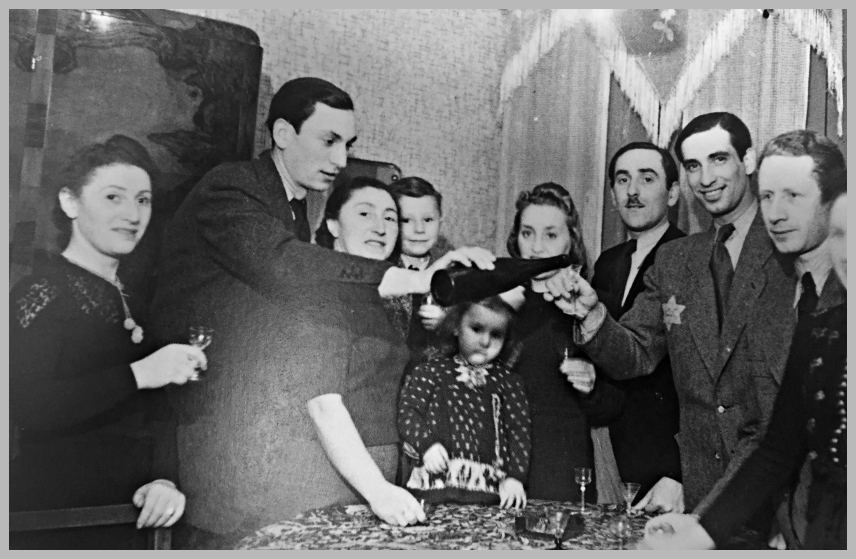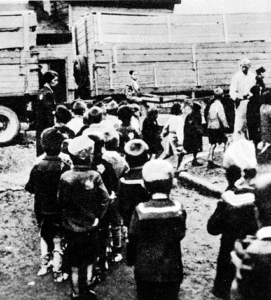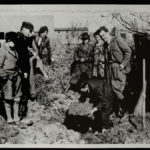There are as many stories as there are people.
Although most of us are no longer working in the i24 offices, Jeff still works there every day.
We were office neighbours and loved teasing each other. His side of the hallway was jokingly referred to as the “Jewish Ghetto”, and mine, the “Gay Ghetto”.
However, one day while stopping by his office, he told me that his mother was interviewed by CBS Morning about her family’s experience during the war while being confined to the Lodz Ghetto in Poland. The joke took a dark turn.
I learned a lot about the Lodz Ghetto from Jeff’s story. It’s one thing to read or hear about the Holocaust via books and documentaries, but very much more visceral when hearing it through the words of someone who was intimately touched by it.
![]()
“Having an official camera, I was able to capture all the tragic period in the Lodz Ghetto. I did it knowing that if I were caught my family and I would be tortured and killed.” – Henryk Ross

Krysia’s Lodz Ghetto Story


A grievous blow has struck the ghetto. They [the Germans] are asking us to give up the best we possess – the children and the elderly.I was unworthy of having a child of my own, so I gave the best years of my life to children. I’ve lived and breathed with children, I never imagined I would be forced to deliver this sacrifice to the altar with my own hands.In my old age, I must stretch out my hands and beg: Brothers and sisters! Hand them over to me!Fathers and mothers: Give me your children!— Chaim Rumkowski, September 4, 1942


 Lodz Ghetto and Henryk Ross Resources
Lodz Ghetto and Henryk Ross Resources
 Memories unearthed from the Lodz Ghetto CBS Sunday Morning
Memories unearthed from the Lodz Ghetto CBS Sunday Morning
This is the under seven-minute interview Krysia Rosenstein gives to Chip Reid on Sunday Morning News. Also interviewed was 94-year-old, Abraham Neuman who also survived Lodz ghetto.

An all-seeing I: A closer look at the AGO’s sombre Lodz Ghetto photo exhibit
The review of the Memory Unearthed exhibit at the Art Gallery of Ontario by James Adams for the Globe and Mail.
The article contains more information about Ross as well as life in the ghetto.

The Lo dz Ghetto Photographs of Henryk Ross | AGO
dz Ghetto Photographs of Henryk Ross | AGO
A detailed walk through of the exhibit that includes teacher and student resource.
 The Long-Lost Powder Compact
The Long-Lost Powder Compact
The story of Jeff’s sister, Tina and her husband discover thought to be lost family heirloom – a small silver powder compact that once belonged to Tina’s grandparents, Jakob and Tania Stopnicki. Jakob gave his wife, Tania the powder compact as a gift, for which he traded his daily ration of bread.













[…] Revelations Beyond Office Small Talk […]